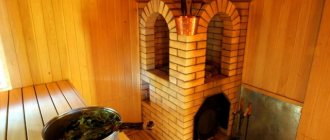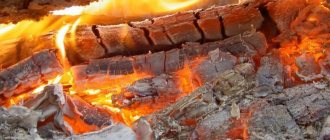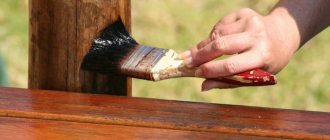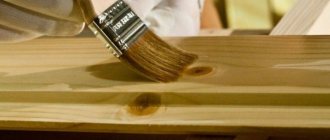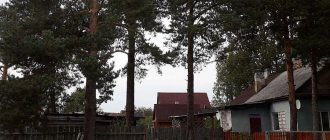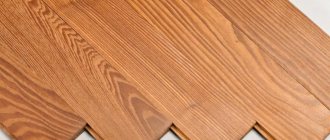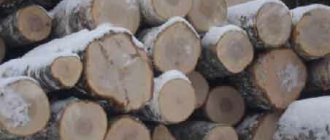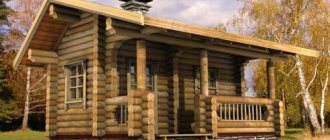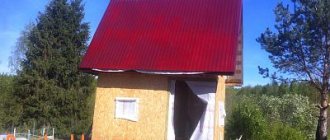Wood as a material will never lose its relevance. But to maintain its beauty and durability, the surface must be periodically subjected to protective treatment.
In outdoor conditions, impregnation for outdoor use is used for this purpose. Thanks to it, the tree becomes resistant to bad weather, insects, and fire.
The main thing is to choose the impregnation that suits your design and is suitable for its purpose.
Why impregnate wood?
The material is popular in construction due to the following advantages:
- environmental friendliness;
- hygroscopicity;
- heat capacity;
- sound insulation;
- aesthetics (even without additional finishing);
- ease of processing and installation;
- affordable price.
However, a wooden structure that is constantly located on the street is destroyed over time under the influence of:
- ultraviolet rays;
- high humidity;
- fungus, mold;
- insects, bark beetles;
- precipitation;
- dust, dirt;
- sudden changes in temperature;
- damage;
- fire.
To prevent spoilage, an impregnation was developed.
It is needed to extend the service life of the material by forming a protective layer on the surface or penetrating deep into the structure.
The drugs are produced in a narrowly targeted manner, when some resist moisture, others – fungus (antiseptics), others – fire (fire retardants), there are decorative ones and more. Complex action impregnations are also available. They are more expensive, but more effective.
It is recommended to work with the product at a temperature of +10 degrees. It will absorb evenly and dry quickly.
In addition, impregnation can be an excellent base for painting. The paint applies well, giving the wood the desired color.
How to use
The wood is first cleaned and the resinous areas are scraped off. Remove mold using a scraper or wire brush. Then impregnation is applied - at least 2 layers.
Impregnations are applied in several ways:
- immerse the wood in the solution;
- use a brush or roller;
- applied with a spray.
The use of a sprayer increases the consumption of the product. Organic-based water repellents are not recommended to be applied by spray due to their toxicity.
What you need to know about wood species when choosing impregnation
Depending on the type, trees have different degrees of resistance to biodestruction:
- The weakest. This includes linden, alder, and aspen.
- Weak resistance. Solid elm, maple, birch and beech sapwood.
- Medium resistant. These include fir, larch, and spruce.
- Sustainable. Ash, pine, solid oak.
Based on absorbency, rocks are divided into 3 categories:
- Difficult to impregnate. Ash, solid oak and beech, spruce.
- Average. Linden, alder, aspen, solid pine.
- Lungs. Beech, birch, pine sapwood.
It is important to note that when choosing raw materials for construction outside, the key factor remains the resistance of the rock to destruction, so you need to choose the most resistant ones.
Protection against mechanical damage
Tree guards can be made from boards or metal mesh. It is important to maintain a sufficient distance from the fence to the tree: you need to add at least 1.5 m beyond the crown projection border. Bars or logs (cut thickness of at least 8 cm) must be firmly secured. The distance between the posts should not exceed 2 m. Either six horizontally placed planed boards (20 x 2 cm) with a gap of 20 cm from each other, or a wire mesh (wire thickness 2.5-3.0 mm, cell size from 40 to 60 mm), or rolled steel reinforced mesh (type 0 221 or P 257, size 5.00 x 2.15 m). The height of the fence should be 2 m. The protective fence must be maintained from the moment construction begins until the completion of the construction of all external structures. If the situation develops in such a way that it is impossible to erect a protective fence around the tree, then it is necessary to protect the trunk and root nodules of the tree from mechanical damage in other ways. Sometimes the trunks are covered with a padded shell, for example from straw mats and boards or from scraps of tires and logs, but, as a rule, this is not enough. Stable and durable devices made of beams and boards are needed that will protect the root nodules, butt, trunk and base of the crown. If necessary, tie the lower branches up.
Infectious diseases of coniferous trees are usually caused by fungi. The most common fungal diseases of young coniferous plants are: wilting (drying) of shoots, diseases of needles and shutte, rust and cancer. Let's take a closer look at the main diseases of coniferous trees and methods of treating them:
Wilting of shoots
When withering (drying out), the shoots become lethargic and then die. Fungal organisms penetrate the vessels of stems and roots and clog them, while releasing poisons (toxins). Wilting of the top shoots of mountain pine (diplodia) - fungus Diplodia pinea. Dried brown tufts of needles appear at the ends of mountain pine shoots. In autumn, black shiny dots appear on the needles - pycnidia (spore containers). Droplets of resin are visible on infected shoots. The shoots die, and the entire pine tree may dry out.
Wilting needles and branches on blue spruce - Acanthostigma parasitica fungus. Infection with this fungus occurs in the spring. Usually in mid-summer the needles turn yellowish-pink. Then the shoot curls and dries out. Streaks of resin appear on the bark of the shoot. The entire spruce may die.
Drying of needles and shoots of Skyrocket juniper - mushrooms Stigmina deflectens and Phoma juniperi. In June, the needles turn pale, lose their rich color, turn yellow, then become covered with brown spots and dry out along with the ends of the shoots. Dark dots—pycnidia with spores—appear between the needle scales. Fungi cause the death of needles and shoots; juniper often dies.
Drying of shoots of thuja occidentalis Brabant – mushrooms Macrophoma mirbelli and Pestalotia funerea. The needles and shoots of the thuja become covered with brown spots, and the ends of the shoots dry out. Over time, dark spots appear on the needles - mushroom sporulation, dead needles turn gray.
Protection and treatment measures: preventive spraying in early spring with Kurzat (0.7% solution), during treatment, spraying alternately with Strobi (0.04%), Fundazol (0.2% solution), Bayleton (0.15%), with the addition of Zircon (0.01%). It is also possible to spill the soil under the plant with Fundazol (0.3%) and Zircon (0.01%). Pruning and burning infected parts of the plant.
Diseases of needles and shutte
Diseases of needles and shutte - needles on coniferous trees turn yellow, brown or grayish, and fall off. Dark pads of different shapes form on the needles - round or elongated. These are containers for fungal spores. The shoots die, and the entire tree may die. Examples: Death of pine needles - Sclerophoma pithya fungus. Dried needles take on a grayish color. Black, round dots (pycnidia of a fungus with spores) form on the needles. Infection usually occurs in August. The disease appears immediately or the following year.
The infection of needles on Canadian hemlock is caused by the fungus Leptothyrium pseudotsugae. The needles at the ends of the shoots turn yellow and then dry out. Small dark dots (pycnidia of a fungus with spores) form on it. The development of the fungus causes the shoots to die off, often the entire plant dies.
Schutte is also a pine needle disease caused by fungi. Signs: change in needle color, appearance of black spots, premature death, needles falling off immediately or vice versa, long stay on the branches. Different types of shutte infect pine, cedar, spruce, fir, juniper, and larch. Young pine plants are affected. During spring and early summer the needles turn brown and fall off. Already at the end of October, small yellowish spots appear on the needles or at the ends of the needles. Immediately after the snow melts in the spring, the needles die and turn red (turn brown). In early May, black dots (pycnidia with fungal spores) appear on the needles. During the summer, the needles fall off, the pine weakens and may die. The common pine tree mushroom is Lophodermium pinastri.
In the fall or more often in the spring of next year, the needles turn yellow or turn brown and die. The fruiting bodies of the fungus are formed on the needles in the form of small black streaks or dots. Warm and humid weather favors infection. Weakened and young pines are more likely to get sick and die. The true pine plant is the fungus Lophodermium seditiosum.
From spring to July the needles turn brown and fall off. In autumn, small yellowish dots are visible on living needles, and dotted black fruiting bodies are visible on dead needles. Young pines and weakened trees are mainly affected.
Juniperus schütte is a mushroom called Lophodermium juniperinum . The disease appears in early summer on last year's needles, which turn yellow or brown. At the end of summer, round black fruiting bodies up to 1.5 mm in size appear on the needles. The most affected are weakened plants, which can die in humid conditions.
Larch shutte - mushroom Meria Laricis . In May, brown spots appear on the tips of young needles, which quickly grow. Soon all the needles curl slightly and turn brown. The spores of the fungus on the needles are very small, they can only be seen with a magnifying glass as tiny black grains of sand. Diseased larch branches dry out and the entire plant may die.
Protection and treatment measures: high-quality plant care, regular fertilizing with mineral fertilizers. In snowy winters, scatter peat crumbs to accelerate snow melting. Spraying in late autumn and immediately after the snow melts with Kurzat (0.7%) or copper oxychloride (0.5%). In spring, spraying every 10-12 days with Fundazol (0.2%), Bayleton (0.15%), Strobi (0.04%), with the addition of Zircon (0.01%). Spill of soil under the plant Terminator (0.05%) with Zircon (0.01%). Mandatory collection of infected pine needles; burning pine needles and dead plants.
Rust
Signs of this disease are that in spring the needles turn pale or yellow and fall off. The decorative appearance of coniferous plants suffers (mainly pine trees are affected, spruce trees are rarely affected). On five-coniferous pines (cedar, Weymouth pine), rust leads to cancerous tumors on the branches or trunk and often to death. In May, yellow flakes-pustules (spore containers) appear on Scots pine needles. The needles turn yellow and fall off prematurely, the pines “go bald” and lose their decorative properties. Then the fungus moves to the next host - the coltsfoot - and develops on it. In late autumn, the fungus “returns”, infecting the pine tree. In autumn, the tips of the needles turn brown. In spring, the needles turn pale, dry out, thickenings appear on the branches or trunk, then cancerous ulcers from which resin leaks. Yellow-orange bubbles protrude from breaks in the bark, and when touched, spray fungal spores in the form of a “smoke.” If the trunk is damaged, the plant quickly dies. The second host of the fungus is black currant, which the fungus infects in the summer. At the end of summer or autumn, cedar trees become infected through spores formed on currant leaves.
Protection and treatment measures: spraying in October and spring after snow melts with Tilt (0.25% solution) with Epin (0.01%). Watering under the root with Fundazol (0.3%) with Zircon (0.01%). On cedar and Weymouth pine, at the first signs of wilting of the needles (discoloration, paleness), pruning these branches. When orange bubbles appear on the branches, prune the branches; on the trunk - urgent digging and burning of the plant. Mandatory treatment of black currants in June and August with Topaz (0.05%), Strobi (0.03%). Burning affected currant leaves. If possible, plant currants as far as possible from cedar trees. Destruction of weeds - coltsfoot, sow thistle.
Pine resin cancer
This fairly common disease is caused by the fungi Cronartium flaccidium and Peridermium pini . The development of the first fungus involves the intermediate hosts swamp bluegrass and impatiens. The second mushroom spreads only from pine to pine. The mycelium penetrates through the thin bark at the top of the tree into the wood cells and resin passages, destroying them. The affected part of the tree is abundantly saturated with resin and acquires a grayish-black color. When the resin canker completely rings the trunk, all living branches above the canker die.
Infectious diseases of fruit trees are usually caused by fungi, bacteria and viruses. The most common fungal diseases include wilting (drying) of leaves and stems, various leaf spots, fungal plaques (mold), necrosis, and cancer. Let's take a closer look at each of the diseases and possible methods of treating them:
Wilting (drying out)
When wilting, the leaves of the plant droop, the shoots become sluggish, and then die. Fungal organisms penetrate the vessels of stems and roots and clog them, while releasing poisons (toxins). Examples: verticillium blight, fusarium blight, stone fruit (cherry) blight. Wilting (wilt) of fruit trees is mainly caused by the fungus Verticillium dahliae. This fungus is omnivorous and can infect many plants in the garden: other deciduous trees and shrubs (oak, elm), fruit crops (apple trees, pears, cherries, raspberries, gooseberries), vegetable crops (cucumbers, tomatoes, peppers, potatoes), berries (strawberries). The fungus persists in the soil for several years and is extremely difficult to control. Usually infects plants through the roots.
Protection and treatment measures:
- Never buy used greenhouse soil.
- You shouldn’t buy “chernozems” from the southern regions (Tambov, Voronezh). There, the Verticillium mushroom is ubiquitous.
- remove (burn) dead plants and soil from the site, and never put potato peelings or rotten vegetables in the compost.
- buy healthy fruit plants, preferably grown in your area, and in trusted stores and nurseries. when planting fruit plants with bare roots, soak the roots in a clay mash with the addition of Fundazol (0.2% solution) and Mancozeb (0.4% solution).
- properly care for plants, loosen the soil and carry out regular fertilizing with fertilizers, increase their immunity (spraying with Zircon 1 ml per 10 l).
- if a plant is infected with the Verticillum fungus, you can try to treat it with systemic fungicides, the same Fundazol and TMTD (spraying and spilling the soil), but you need to understand that the fungus usually remains in the soil.
- Etching the soil with a solution of copper sulfate (5%), Nitrafen (2%), TMTD (0.5%), solution of potassium permanganate (0.5%), etc. is only possible under ornamental inedible plants.
Spotting
Spotting is the formation of dead spots on leaves of different colors. The spots are sharply limited from the healthy part of the leaf by a rim. Anti-spot measures : spraying with Bordeaux mixture (1%), Fundazol, Skor, Strobi.
Apple and pear scab is a very common serious disease that affects pome-bearing fruit trees. Leaves, young shoots, and fruits are affected throughout the growing season. Oily spots appear on the leaves, which then turn brown. The shoots become swollen and crack. Fruits have dark spots, become ugly, and grow poorly.
Protection and treatment measures: Selection of resistant varieties. Spraying in early spring with 5% Bordeaux mixture. Then, in the bud phase, treatment with 1% Bordeaux mixture, chorus, foundationazole, etc.; after flowering, 10-15 days later: Merpan, Chorus, Strobi, Skor and other drugs, incl. biological products Fitosporin-M, Alirin-B, Baktofit mixed with Siliplant.
Mold
Fungal plaques (mold) – plaques of mycelium are formed with sporulation on the surface of infected leaves, stems and other organs. Plaques come in different colors (white, brown, black) and different densities. For example, powdery mildew is a white, loose fungal coating.
Protection and treatment measures: spraying with tilot, foundationazol, bayleton, topsin M, strobi, phytosporin-M mixed with siliplant or zircon. The use of immunomodulators (zircon, immunocytophyte, etc.) to improve immunity
Rust
In the first half of summer, rusty spots appear on the leaves and grow. The leaves dry out and die. The plant weakens and may even die. Rust fungi often infect deciduous and fruit plants, “coming” from conifers (pine, larch, juniper) and herbaceous plants. Control methods : spraying with tilot, foundationazol, bayleton, topsin M, strobi, phytosporin-M mixed with siliplant or zircon. The use of immunomodulators (zircon, immunocytophyte, etc.) to improve immunity. Be sure to spray the plants from which rust fungi “come.” Weed control.
Necrosis
Necrosis is the death of areas of the bark, which leads to drying of the stems or branches. Tubercularia is an omnivorous fungus that affects many foliage and fruit plants. Milky sheen is a very common disease that affects all fruit crops. Protective measures: cutting out diseased branches, cleaning small spots on trunks, burning all trimmings. In case of circular damage to tree trunks, remove the entire tree. Disinfection of cuts, spraying and watering the soil under plants with Fundazol (0.2%) and Zircon (0.01%), preventive spraying with Skor, Bayleton, Bordeaux mixture. At the end of October - November, two sprays with copper sulfate (100 g per 10 l) are carried out.
Cancer
Cancer and cancerous tumors are a strong growth of the affected tissue, the formation of tumors, growths, wounds or ulcers. Fungi secrete substances that stimulate cell division. Control measures: The same as for necrosis.
Bacteriosis
Bacterioses of deciduous and fruit trees are less common than fungal ones, but some of them are also dangerous for plants and even lead to death. They can also cause wilting of branches, leaf spots, necrosis, cancer of branches and trunks, and rot. Flowers, then leaves and shoots suddenly wither, look burnt, their tops are often bent with a hook in the form of a “staff”. The bark of young branches swells and becomes wet. A light liquid with a sour odor—exudate—is abundantly released from the affected shoots and fruits. Bacteria enter plants through flowers and wounds with the help of water, insects, birds, and pruning. Measures to combat bacteriosis:
- use of resistant varieties of fruit trees.
- if possible, remove diseased parts of the plant; in case of serious damage to the trunk, destroy the entire plant
- For fruit trees, it is possible to cut the tree below the damage to the trunk and grow the tree again.
- disinfection of cuts, use of copper sulfate and Fundazol, fight against gnawing insects (bark beetles), which also spread bacterial diseases.
- use of the biological product Baktofit (based on bacteria and antibiotics) - it is recommended to water the soil with a 0.7% solution.
- Application of the drug Fitolavina-300 and its derivatives (strekar): watering at the root and spraying 20 ml per 10 l (0.2% solution).
Viral diseases
Viral diseases of deciduous and fruit trees have a destructive effect on plants. Viruses cause various growth disorders: deformities, spotting, leaf wrinkling, dwarfism, etc. Sometimes the diseased plant dies. They are transmitted mainly with the sap of a diseased plant by sucking insects, nematodes, and by humans - when cutting cuttings, grafting, pruning with a knife or pruning shears. They are difficult to identify. Light spots and stripes appear on the leaves, tree growth stops, fruits either fall off or become bitter.
Protection and treatment measures:
- Use virus-resistant varieties, preferably from your area.
- Fight against virus vectors – aphids and nematodes. Timely removal of weeds on which aphids live
- Destruction of diseased plants
- When pruning and grafting, disinfect cutting tools in a 1% solution of potassium permanganate
By contacting us, you are contacting professionals! Our specialists will help identify diseases in your garden and carry out appropriate treatment.
There are many reasons for wounds in a tree - pruning, breaking, partial or circular damage to the bark and wood, advanced infectious diseases. Of course, timely treatment will stop the destruction and extend the life of the tree for decades.
|
|
Classification of impregnations for external use by purpose
According to this parameter, funds are divided into several types. Let's look at the features of each of them in more detail.
Anti-darkening
A change in the color coating of raw materials is caused by infection with a fungus. This most often happens when wood is stored outdoors for a long time or in constant contact with the ground.
It is important to understand that budget protective impregnations have a limited service life - from 3 to 6 months. More expensive formulations continue to operate after 1–2 years.
The drug must be difficult to wash out or cannot be washed out with water. A striking example is the domestic impregnation brand “Senezh”.
Material already infected with fungus must first be bleached, that is, the cause of infection - fungus or mold - must be eliminated.
For treatment in outdoor conditions, it is allowed to use products containing chlorine. But a significant disadvantage of such compositions is that the impregnation not only burns out harmful microorganisms, but also destroys the wood structure.
Preparations with active oxygen have proven to be much more effective. They destroy fungus without harming the material and do not emit harmful substances.
From moisture and rotting
These are solutions with water-repellent properties. Penetrate deep into the structure. Prevents deformation and rotting of raw materials under the influence of moisture.
Their advantage is that after applying the composition the wood continues to breathe.
The service life of the protective layer is 1-3 years. After its expiration, it is recommended to recoat the material.
High quality impregnation will prevent the material from cracking as it dries. This is especially necessary on the end parts of log houses.
In addition, look for the presence of ultraviolet filters in the composition. Their absence will lead to a reduction in the effect of the product, and the treated surface will begin to darken.
For load-bearing structures
These include:
- rafter systems;
- beams, partitions;
- ceilings;
- walls;
- base;
- basements.
Photo: spray treatment of the rafter system
To reliably protect such elements, the drug must have the following properties:
- antiseptic;
- fungicidal;
- do not wash off with water;
- increase fire resistance.
They are often colorless, water-based liquids.
The disadvantage of inexpensive impregnations is that they paint the surface a greenish tint. Expensive preparations do not change the shade of wood.
When using indoors, it is important to pay attention to the composition so that it does not contain toxic substances.
Decorative
Compared to others, the purpose of these stains is to add beauty to structures and products. With their help, it will be possible to perform high-quality imitation of noble breeds.
Most acrylic-based products are environmentally friendly. They make the surface elastic, waterproof, add shine, protect the surface from ultraviolet rays, and at the same time act as an antiseptic. They have a wide range of colors.
Frost-resistant
It is recommended to purchase for external wood processing in the northern regions of the country. Withstands air temperatures down to –40 degrees.
Can be applied in the cold without loss of working properties. They tolerate repeated freezing and thawing normally.
Sun protection
They also act as antiseptics. They contain a filter against ultraviolet rays, which serves as reliable protection for the tree. Bright colors do not fade in the sun or fade over time. The surface does not crack due to temperature changes.
Article: how to build a pergola from wood
Fire retardants
This is the name given to the preparations that make the raw material highly flammable. Prevents combustion in case of fire.
The most effective products are those that combine fire and bioprotection. Penetrate deeply into the structure or form a film. They may change the color of the coating, but not the texture of the wood.
When purchasing fire retardants, check for quality certificates and fire safety reports.
Damage to wood from moisture
Under natural conditions, a living tree has a number of protective mechanisms that prevent the negative effects of fungus, insects and rodents. Once cut, the wood becomes vulnerable. There is a loss of density and destruction of the structure.
The main enemy that accelerates these processes is moisture, which creates a favorable microclimate for the development of fungus. The following factors can provoke putrefactive processes (mold):
- condensation in the room;
- increased level of importance;
- temperature changes;
- freezing;
- contact with ground;
- precipitation.
Damage to wood can be prevented by treating its surfaces. This is done at the stage of wood storage or directly during construction. Impregnations with antiseptic properties are used as a working solution.
Famous manufacturers
Below is a list of manufacturing companies whose products are in greatest demand.
Belinka
Country of origin: Slovenia.
Engaged in the production of impregnations for the protection and decoration of wood. This:
- transparent antiseptics;
- penetrating primers;
- azure multilayer impregnation with the addition of wax;
- azure decorative impregnations;
- paints.
Belinka has official representative offices throughout Russia.
Aquatex
A Russian company that produces several types of combined impregnation compositions:
- “Aquatex Extra” - based on wax, oil;
- “Aquatex primer antiseptic” is a non-washable antiseptic;
- "Aquatex" - decorative with bioprotection and others.
Each contains an ultraviolet filter.
Aquatex does not produce products with biopyrene protection.
Tikkurila
The Finnish concern produces many series of paint and varnish products. Products with antiseptic protection, against insects, ultraviolet radiation. They have an environmentally friendly composition. Some antiseptics can be tinted.
Senezh
Russian trademark.
Specialization - production of impregnations for processing wood and decking boards.
The list of products includes:
- biopyrenes;
- preservative solutions;
- antiseptics;
- decorative;
- protective compounds.
There are tinted solutions. The price is affordable.
NEOMID
Russian manufacturing company.
The products are considered one of the best on our market for protecting wood and decking boards from fire and moisture.
On average, antiseptic protection lasts 10 years, and against fire – 7 years.
To control the quality of processing, a tinting pigment is included.
Can be used in residential buildings, bathhouses, gazebos, summer kitchens.
Final Recommendation
By the way, last year, an old friend of mine bought impregnations for his new home from a dealer. The first thing he liked was communicating with the consultant. According to a friend, he understands very well when it comes to choosing impregnating agents for wooden structures. And second: the price of the product turned out to be quite acceptable, which is important for many buyers.
This is not an advertisement - just a consultation, which is always useful. For residents of Moscow and the Moscow region, I recommend this company for the sale of Neomid impregnations. Moreover, the company is specialized, sells retail at wholesale prices and has been on the market of high-quality wood protection products for several years.
That's all for now. I hope this was informative? If yes, then recommend the article to your friends and subscribe to the news. I wish you all good luck, health and peaceful skies. Bye!
Wisdom Quote: What is not true cannot be great.
Tips for choosing
When purchasing, we recommend paying attention to the following points:
- Purpose and place of use. Indoors, it is worth taking environmentally friendly water-based formulations with natural oils. They are produced in the form of a concentrate. There are no special restrictions for outdoor work.
- Availability of quality certificates. Without them, the likelihood of purchasing an effective product is minimal.
- Determine the reason for processing. There are narrowly targeted impregnations on sale that protect only from moisture, insects or fire. The optimal purchase would be a complex drug that combines several properties at once.
- If you want your product to look beautiful, take time to choose the color. Check to see if the product can be tinted.
- Take the drug with a reserve, since concentrates from different batches may differ in tone.
- You should not buy impregnation in the markets. The conditions for storing and transporting goods there are practically not observed. There is a high risk of purchasing a fake.
- Study the instructions for use, namely the service life of the coating. Most products retain their properties for no more than 3-5 years. Inflated figures are a marketing ploy.
- Don't forget about application methods. There are impregnations that are used only by soaking the wood.
- Don't forget to wear a respirator while working.
For outdoor use, it is recommended to use universal, complex action products that simultaneously resist bad weather, insects and fire.
Making your own product
This ancient recipe has been used for centuries. You can cook it yourself from available products. The impregnation is environmentally friendly, emphasizes the wood texture well, and protects against moisture due to the content of vegetable fats and wax.
What water-repellent impregnation would you use?
PurchasedHomemade
To prepare the product you will need the following ingredients:
- linseed oil - 0.5 l;
- beeswax - 50 g;
- a slice of pine rosin the size of a quail egg.
Step-by-step instructions for preparing the impregnation:
- Oil is poured into a pan that is no longer used for cooking.
- Grind the wax using a grater or a knife.
- Place the pan on the stove, add wax, and add rosin.
- Turn on minimal heat.
- Boil the oil solution, stirring constantly until the wax is almost completely dissolved.
- Turn off the fire.
Homemade water repellent is ready.
As a rule, home remedies are less effective than factory-made drugs. And the final cost of the “grandfather’s funds” may turn out to be higher. It’s a personal matter for everyone which option of water repellent to choose. But even the simplest impregnation will in any case extend the life of a wooden house and finishing made from this material.
